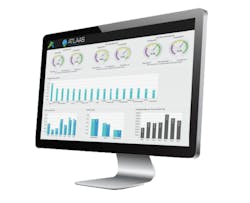How to eliminate the perception of maintenance as the “cost center” of fleet operations
Maintaining a fleet of vehicles is a necessary, but expensive undertaking by nature. Oftentimes the maintenance department of an operation can be seen as a “cost center” by the finance team, explains George Williams, CEO of asset management consultant company ReliabilityX. So naturally, when cost cuts come around, the maintenance budget is often a target.
Why is that?
Williams explains during a maintenance management certification course he instructs at the University of Wisconsin-Madison, that when this happens it’s often because the maintenance department isn’t effectively converting their needs into the “business speak” that the finance department needs.
A Fleet Advantage survey confirms that 34 percent of fleet executives believe finance doesn't understand the benefit of investing in newer equipment. Furthermore, 31 percent said finance doesn't understand various operating costs associated with the fleet.
In other words, fleets need to be able to translate their data and ROIs into something that makes sense for the entire operation in order to avoid unreasonable budget cuts.
That can be quite the undertaking for some, especially when data sets aren’t universal across all functions of an operation. Matthew Hendrix, senior director of fleet services at analytics company Fleet Advantage, says miscommunication is common when maintenance and finance are looking at two different - sometimes completely different - indices.
That’s something Fleet Advantage wanted to combat with recent enhancements to their fleet analytics software, ATLAAS Unified, which offers the same data for all functions in a fleet from maintenance, to finance, to operations. While the software’s “dashboard” can be customized by a user to focus on the most relevant data for their position, every function funnels the same data sets.
“It makes everyone be able to come to one central truth in that they can all come to one spot and learn how the asset is performing,” Hendrix says.
User-friendly data can also help fleets justify best practices and additional training for their technicians.
Hendrix offers tracking diagnostic time by OEM as an example. If diagnostic time is longer on one model of truck versus the other, this can give fleets insight into which technicians need training on which model and which ones they are most comfortable with.
“If you have 10 mechanics and you predominantly spend an hour longer diagnosing one OEM versus the other, that would be 10 hours a day you could be saving and focusing on preventive maintenance,” Hendrix says. “[ATLAAS] just gives better visibility and dissects the data to a friendly user interface where it’s very easy to be understood.”
About the Author
Vesna Brajkovic
Associate Editor - Vehicle Repair Group
Vesna Brajkovic is associate editor for the Vehicle Repair Group.
Brajkovic has covered the transportation industry for a number of trade publications, with a focus on the vehicle maintenance and automotive aftermarket industries since 2016. Prior to that, she covered the global aviation industry as assistant editor for Endeavor Business Media's AviationPros.com, and held a number of editorial positions at an award-winning community newspaper.

